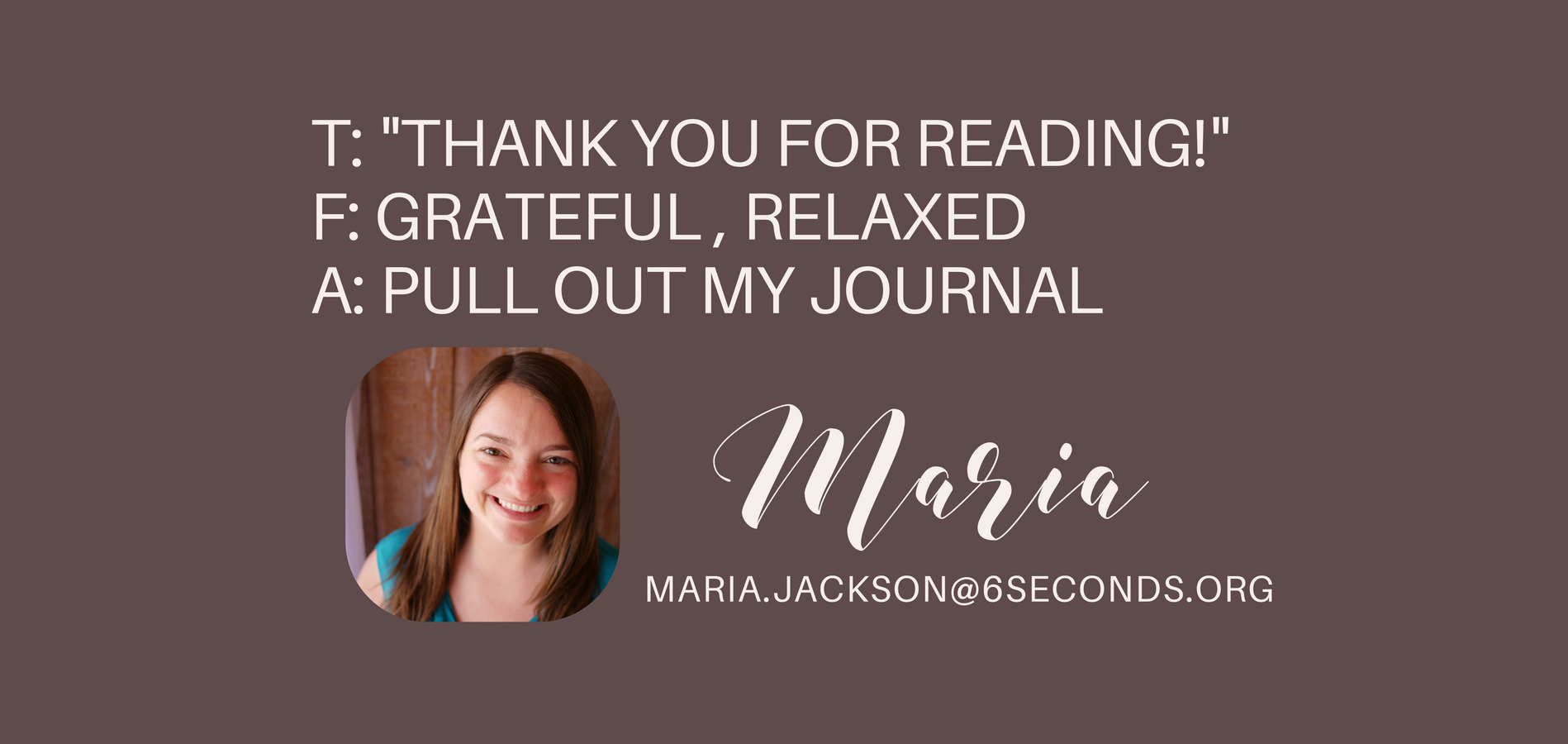
Hello, friends!
Welcome to the first online version of Illuminate. Illuminate is a weekly e-mail series that provides practical tips + galvanizing inspirations for practicing an emotionally intelligent life. In our time together, we’ll operate from the assumption that you have all the wisdom you need inside of yourself + that you have a purpose the world needs to see. We will explore the tools + techniques to illuminate your own inner wisdom and purpose. If you’d like to receive this free gift of goodness in your inbox every week, subscribe here. This week’s topic asks you try an easy journaling tool that will be meaningful for amateur and seasoned journalers alike.



In a world that tells us to go faster, perform better, and shout louder, journaling is a salve for the soul.
Journaling asks us to go slower, turn inward, and listen for the whispers within. Are you taking part in this accessible and transformative activity?
According to these studies, people who journal enjoy a variety of health benefits. They have stronger immune systems, they manage stress more effectively, and, in one particularly tangible study, arthritic patients who journaled regularly experienced a marked decrease in their arthritic inflammation. Wow-its even more beneficial than I thought.
So why isn’t everyone journaling? There are a lot of really valid hesitations, and I’d like to offer you a tool that takes into account just about all of them:
“I don’t know what to write” (what if you had an easy framework to help you fill in your own words?)
“I don’t have time” (what if journaling could take as little as 15 seconds?)
“I am not a good writer” (what if you could succeed without even writing complete sentences?)
“I feel stuck when I write about my problems” (what if you had a structure to make meaning of it all?)
Let’s dive in.

This journaling tool is as simple as T, F, A. Here’s how it works. Pick some moment from your day to write about – a moment that you’d like to explore or learn from. Now, answer three simple questions:
What are the thoughts?:
What are the feelings?:
What are the actions?:
about the situation, in any order.
For example, Sally is feeling really distraught about the criticism she received from her daughter today, so she quickly writes her:
Thoughts: “I won’t ever be enough for her” + “She doesn’t appreciate me at all”
Feelings: hurt, unappreciated, disgust
Actions: went to my room + slammed the door
That’s it! The practice of noticing your feelings, thoughts & actions is a way to get better at Knowing Yourself — a key pursuit in the Six Seconds Model of Emotional Intelligence. As we reflect over time on our actions, thoughts, and feelings, we come to see ourselves more clearly.
Give yourself 2 minutes a day for a week to TFA, then next week I’ll share some questions to review the story of these reactions and responses.

How did it feel to take a moment to be reflective? Do you tend to be a reflective person?
How could you use TFA without a journal?
How could TFA be used in your work or family? (ps– Six Seconds actually makes these TFA cards that are great for coaching, families, schools, etc)
PS– Want to focus on growing your emotional intelligence every week? Click here to receive Illuminate in your inbox 🙂

Illuminate is a weekly e-mail series that provides practical tips + galvanizing inspirations for practicing an emotionally intelligent life. In our time together, we’ll operate from the assumption that you have all the wisdom you need inside of yourself + that you have a purpose the world needs to see. We will explore the tools + techniques to illuminate your own inner wisdom and purpose. If you’d like to receive this free gift of goodness in your inbox every week, subscribe here.
- Identify Your Most Fulfilling Career: A Step-by-Step Guide for Women - March 21, 2022
- POP-UP Festival Partnership with AEON Corporation - March 9, 2022
- 3 Interview Tips for Women from an Executive Emotional Intelligence Coach - February 9, 2022


Journalling has been for years from far my most effective way to deeply integrate knowledge and develop…. I call this “my ego journal”, but this is only “me”….
Thanks for sharing, Jean! 🙂
LOVE this article. Sometimes it is so hard to begin a journal entry. For whatever reason, sometimes it feels overwhelming & I don’t know where to start. This is a simple & effective tool to get me started!!!
Thank you, Linda!! 🙂